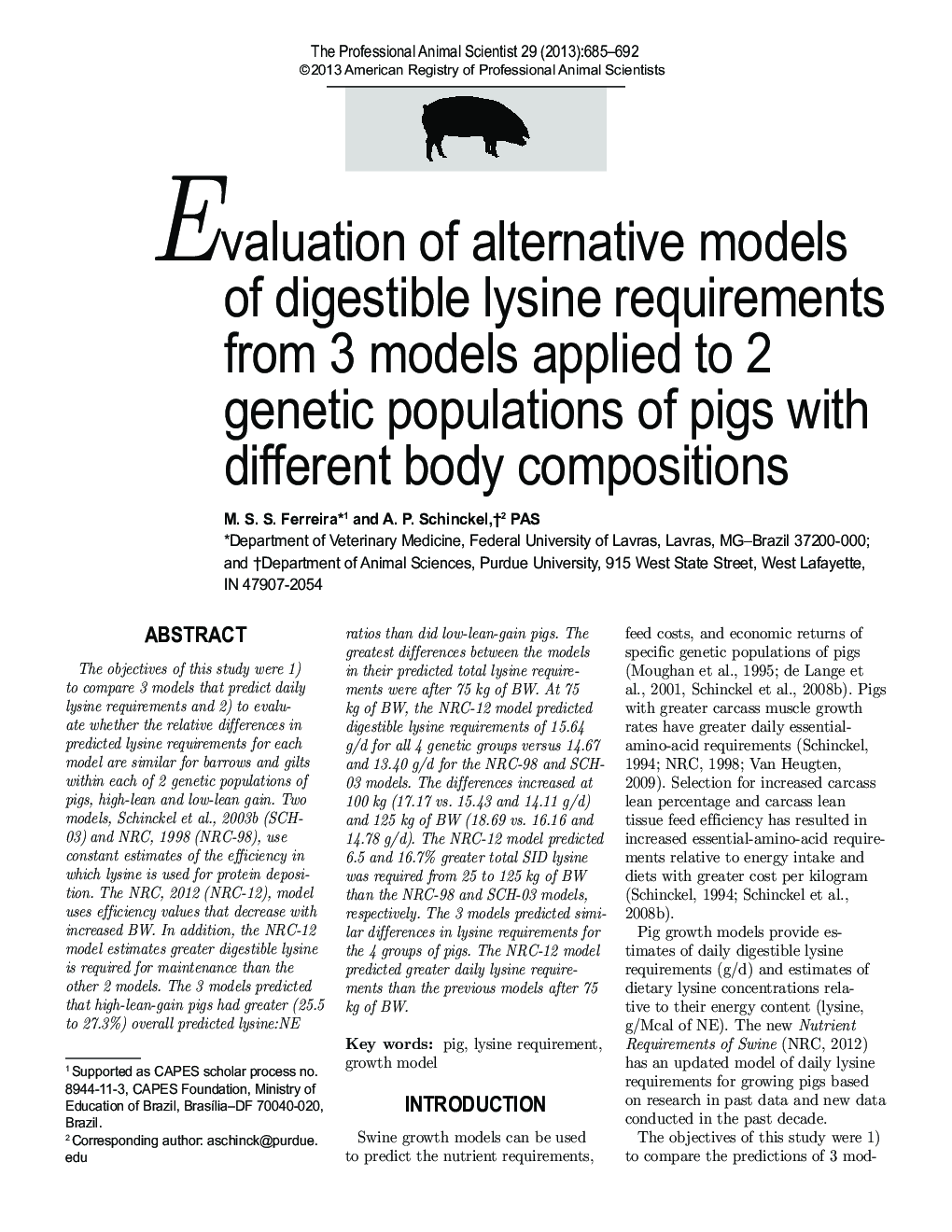| Article ID | Journal | Published Year | Pages | File Type |
|---|---|---|---|---|
| 10161864 | The Professional Animal Scientist | 2013 | 8 Pages |
Abstract
The objectives of this study were 1) to compare 3 models that predict daily lysine requirements and 2) to evaluate whether the relative differences in predicted lysine requirements for each model are similar for barrows and gilts within each of 2 genetic populations of pigs, high-lean and low-lean gain. Two models, Schinckel et al., 2003b (SCH-03) and NRC, 1998 (NRC-98), use constant estimates of the efficiency in which lysine is used for protein deposition. The NRC, 2012 (NRC-12), model uses efficiency values that decrease with increased BW. In addition, the NRC-12 model estimates greater digestible lysine is required for maintenance than the other 2 models. The 3 models predicted that high-lean-gain pigs had greater (25.5 to 27.3%) overall predicted lysine:NE ratios than did low-lean-gain pigs. The greatest differences between the models in their predicted total lysine requirements were after 75 kg of BW. At 75 kg of BW, the NRC-12 model predicted digestible lysine requirements of 15.64 g/d for all 4 genetic groups versus 14.67 and 13.40 g/d for the NRC-98 and SCH-03 models. The differences increased at 100 kg (17.17 vs. 15.43 and 14.11 g/d) and 125 kg of BW (18.69 vs. 16.16 and 14.78 g/d). The NRC-12 model predicted 6.5 and 16.7% greater total SID lysine was required from 25 to 125 kg of BW than the NRC-98 and SCH-03 models, respectively. The 3 models predicted similar differences in lysine requirements for the 4 groups of pigs. The NRC-12 model predicted greater daily lysine requirements than the previous models after 75 kg of BW.
Keywords
Related Topics
Life Sciences
Agricultural and Biological Sciences
Animal Science and Zoology
Authors
M.S.S. Ferreira, A.P. PAS,
